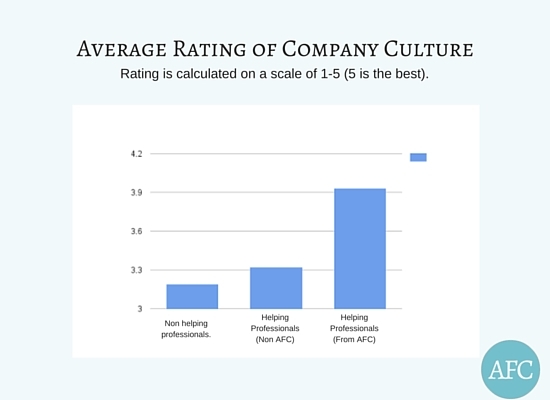We asked our employees for honest feedback...and it wasn't all good. Here is what we learned.
Last month, my organization launched an ongoing project to understand burnout in the field of Behavior Analysis - both internally and externally. The project started when Director of Behavior Analysis, Leighna Fischer, and I decided to take a class called People Analytics on Coursera created by the University of Pennsylvania and Professors Cade Massey, Martine Haas, and Matthew Bidwell. Inspired by the ability to use statistics in order to create and implement strategic measures that drive improvements to our vocational environment, we decided to take action.
We posted an article right here on the Huffington Post with a survey on burnout that generated over 60 responses from professionals across the nation and sparked conversation in nearly 20 different facebook groups dedicated to behavior analytic professionals. The results of the survey were surprising. But I'll get back to the results in a minute.
Before we even had a chance to analyze the quantitative and qualitative data pouring in, there was an immediate backlash from our employees internally. In our fifth month of 2016, we had lost zero employees so we were feeling pretty prettyyy prettttttty good. We sent the Huffington Post article to our employees and encouraged them to participate in the study. We expressed our desire to incorporate their feedback into the organization's strategies for improvement.
Within three weeks of the project launch, 10% of our employees quit. Most employees attributed their decision to personal reasons but something felt off. Why was this happening right as we were making strides to hear the voices of our employees and respond in a way to improve their satisfaction at work?
Maybe it was a coincidence. Maybe it was personal. But what seems more plausible is that the project evoked a conversation amongst our employees. Dissatisfaction at work is often hidden due to the social pressures but the project opened the door to honest feedback... and it wasn't all good.
Personal as it may feel, we must face the reality - the field of Behavior Analysis has a high turnover rate of 30-60% and it is the responsibility of organizations' leaders to find out why. Though the heavy turnover was stressful on our operations, the silver lining is important data we were able to collect. With honest survey response data, we are able to take strategic measures that are based on valuable insight straight from the mouths of employees who are currently burnt out.
Now we can look at the surprising results.
We've been told repeatedly fields that employ helping professionals (think teachers and those in health care) have a higher rate of turnover and burnout. Yet our results show no significant difference between helping professionals and non-helping professionals.
The qualitative feedback was arguably more useful than the average overall rating. We asked: "What could your organization do to improve the culture at work?" Below are the most common responses from each sample.
It probably doesn't come as a surprise that communication was the number one area burnt out employees felt their organizations needed to improve upon. Continue reading to find out the four steps AFC is taking to address each of the top rated areas for improvement. We urge you to consider how these tactics may apply to your own organization (even if you do not work with helping professionals).
1. Improve communication by utilizing new software.
You would think that in the Age of Information, communication wouldn't be an issue. But it turns out that access to information and the ability to effectively communicate that information with one another are not correlated.
We realized how important it is to assess how employees are able to communicate with their supervisors and understand the responsibilities they've been entrusted with. Right now we are testing the difference between our internal communication methods that mostly utilize features like Google Sheets and Docs versus software like Rethink - a platform that tracks and keeps team members updated on data across both clinical and administrative dimensions of clients in behavioral health. I'll give you a hint... the thoroughly developed software is winning.
2. 360 Degree Employee Reviews.
Employees tend to hate reviews reporting that it is just a time for supervisors to share everything they don't like about them. 360 Degree Reviews is a method used to collect information on an employee from multiple perspectives. The method is already being utilized by 63% of organizations in the US and Canada because it allows staff to provide important developmental feedback that they may not otherwise share. In other words, the feedback provided is more useful to the employee and feels fair.
During our most recent review period, the performance review score was an average generated by all supervisors, peers, clients, and even self report. Additionally, all review surveys gave an opportunity for people to provide open feedback about each employee's strengths and growth edges. Each employee will walk away with a strong understanding of company decisions. They will also have the power and information to improve their performance.
3. Raises, benefits, but more importantly.... Recognition.
Last year the media was very interested in the conversation about salary and satisfaction started by Gravity's CEO, Dan Price. Price decided to implement company wide raises in order to ensure all employees were receiving at least $70,000 per year. He explained that he had read an article that said happiness did correlate with higher salaries but only up to $70,000 per year. After that, happiness had no correlation with salary.
Price was all over the news - portrayed as a philanthropist and a modern day messiah (I'm not exaggerating he was actually compared to Jesus). But it turned out there was a larger scandal behind the scenes that may or may not have driven this decision. Additionally, following the initiative, the influx of resumes overwhelmed the hiring process and company leaders started to quit, reporting that they felt undervalued.
What we learned as a community is that money only has some relationship with satisfaction. Consistent with the findings from AFC's study above, feeling appreciated and valued is much more important to employees.
Autism Family Center is giving raises to employees based on a method we explained in step 2. But we are emphasizing the implementation of methods to honor the work our counselors are doing in the field. We have created systems for the leaders of the organization to communicate the achievements of our employees. Supervisors may not be able to directly see each counselor at all times, but each one deserves recognition for the important work they do every day with children on the autism spectrum.
4. Shifting the responsibility of recruitment and training.
A lot of the feedback we received indicated that new employees didn't understand what their role was. Even worse, they didn't know who they should report to when faced with various issues. One mistake our company made was entrusting only its top leaders to interview every single candidate. When those candidates started, there was confusion as to why they weren't reporting to the people they interviewed with. AFC made a decision to include more of its mid-level supervisors in the recruitment process of new hires.
Additionally, AFC is implementing a more structured training procedure to ensure each of its employees has a firm understanding of not only what their responsibilities are, but also how they can be successful. Again, it will be important to involve more employees in the training process so new hires can start to build trust amongst all peers and supervisors from day one.
Of course, the four steps above simply graze the surface of what organizations can do to reduce burnout and turnover. Autism Family Center will continue to assess burnout in this field and the effectiveness of the measures described in this article.
Contributor: Leighna Fischer, BCBA. Leighna Fischer is a Board Certified Behavior Analyst and the Director of Behavior Analysis at Autism Family Center. Leighna has been working with individuals on the spectrum for over 10 years. She considers herself a Radical Behaviorist and a Chicago Bears enthusiast.



